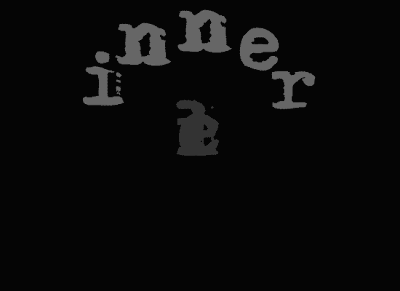Peano’s string; a history of spiritual stories (Image above)
Axiomatic Poems
I would like to introduce a new mathematical structure to be used with mathematical poetry.
I understand that for two thousand years Euclid’s axioms stood alone as a meaningful axiomatic system. However, in 1889 Italian mathematician Giuseppe Peano created a new axiomatic system based on two primitive notions and the five following statements:
1. One is a number
2. If x is a number, the successor of x is also a number.
3. One is not the successor of any number.
4. If two numbers have equal successors, they are equal.
5. If a set of numbers contains the number one and it contains all the successors of its members then the set contains all the numbers.
What is interesting is that this system does not have to be limited to number. Calvin C. Clawson in his book “Mathematical Sorcery: Revealing the Secrets of Numbers” gives us the same five statements in the following form:
1. Heinsforth is a gelb
2. If x is a gelb, the ranker of x is also a gelb.
3. Heinsforth is not the ranker of any gelb.
4. If two gelbs have equal rankers, they are equal.
5. If a set of gelbs contains the gelb Heinsforth and it contains all the rankers of its members then the set contains all the gelbs.
Clawson has substituted the number “one” with Heinsforth, the term “number” with “gelb” and used “ranker” in place of successor. The point that Clawson is trying to make is that we need not be concerned with the primitive notions per se. What we need to be concerned with is the relationship of these notions within the axiomatic structure. From what I understand there could be incalculable different ways to describe the primitive notions however, only one way to logically relate them to each other. After reading Clawson’s axioms, I became aware of the ability of this structure to create metaphor. The source domain of the metaphor is the Peano axioms. The target domain is the same set of axioms with poetic substitutions placed inside the axioms. Therefore, I have created the axiomatic poem shown below:
Let us replace “number” with “cat” let us also replace “successor” with “God”. Lastly, I am going to replace “One” with “Abraham”.
1. Abraham is a cat
2. If x is a cat, the God of x is also a cat.
3. Abraham is not the God of any cat.
4. If two cats have equal Gods, they are equal.
5. If a set of cats contains the cat Abraham and it contains all the Gods of its members then the set contains all the cats.
Now the next interesting idea is: Can these axioms create interesting theorems?






